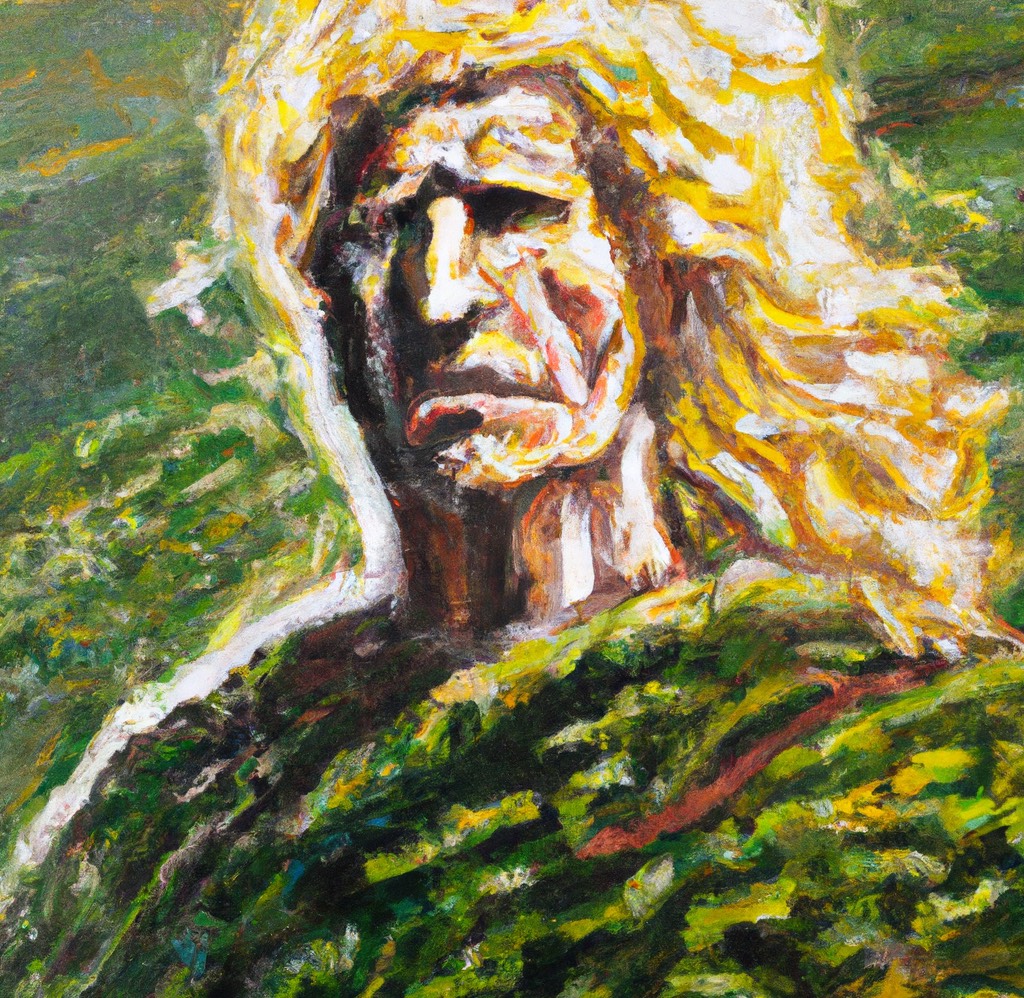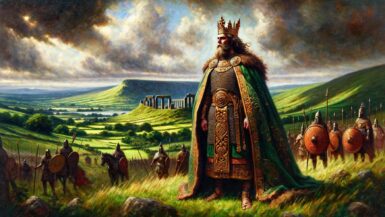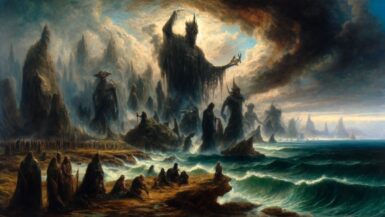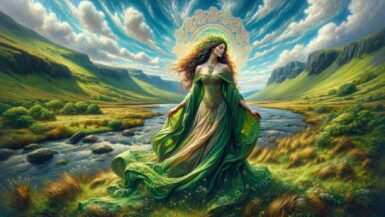The Fenian Cycle, one of the four major cycles of Irish mythology, revolves around the tales of Fionn Mac Cumhaill, the Fianna, and their legendary exploits. Set in a time between the Ulster Cycle and the Historical Cycle, the Fenian Cycle focuses on the heroic deeds, adventures, and battles of the warrior bands led by Fionn Mac Cumhaill. This article will provide a comprehensive exploration of the history of the Fenian Cycle, its main characters, and the significance of its stories in Irish culture and folklore.
The Fenian Cycle: An Overview
Four Cycles of Irish Mythology
Irish mythology is traditionally divided into four major cycles: the Mythological Cycle, the Ulster Cycle, the Fenian Cycle, and the Historical Cycle. Each of these cycles is a collection of tales, myths, and legends that explore different aspects of ancient Irish history, culture, and society.
The Fenian Cycle’s Role
The Fenian Cycle primarily focuses on the adventures and exploits of the Fianna, a group of warrior bands led by the legendary hero Fionn Mac Cumhaill. The stories in this cycle are characterized by their emphasis on the themes of heroism, camaraderie, and the close relationship between humans and the natural world.
Fionn Mac Cumhaill: The Legendary Hero
Birth and Early Life
Fionn Mac Cumhaill, the central figure of the Fenian Cycle, was the son of Cumhaill, the leader of the Fianna, and Muirne, the daughter of a druid. Following the death of his father, Fionn was raised in secret by his mother and a wise woman named Bodhmall. During his youth, Fionn acquired extraordinary knowledge and wisdom by accidentally tasting the Salmon of Knowledge, a magical fish that contained all the wisdom in the world.
Ascension as Leader of the Fianna
After proving his worth through a series of tests and feats of strength, Fionn was accepted as the leader of the Fianna, a group of elite warriors who served the High Kings of Ireland. As leader, Fionn continued the legacy of his father, leading the Fianna in numerous battles and adventures, and protecting the people of Ireland from threats both natural and supernatural.
The Fianna: The Warrior Bands of Ancient Ireland
Origins and Significance
The Fianna were a group of warrior bands in ancient Ireland, made up of members from various clans and territories. These bands were bound by a code of honor and loyalty, and their primary purpose was to protect the people of Ireland from threats and invasions. The Fianna played a significant role in Irish society, as their heroic exploits were celebrated in poetry, song, and oral tradition.
The Fian: Members and Organization
The members of the Fianna were known as the “fian,” and they were renowned for their martial prowess, bravery, and loyalty to their leader. To join the Fianna, a warrior had to pass a series of rigorous tests, which included feats of strength, agility, and endurance. The Fianna were organized into smaller groups, each led by a captain, and they were bound by a code of honor that emphasized the importance of loyalty, courage, and integrity.
The Legendary Exploits of Fionn Mac Cumhaill and the Fianna
The Pursuit of Diarmuid and Gráinne
One of the most famous tales of the Fenian Cycle is the Pursuit of Diarmuid and Gráinne, which tells the story of the elopement of Gráinne, the daughter of the High King Cormac Mac Airt, and Diarmuid, one of Fionn’s most trusted warriors. Gráinne, who was betrothed to Fionn, falls in love with Diarmuid and convinces him to flee with her. This leads to a long and perilous chase across Ireland, with Fionn and the Fianna pursuing the couple. The story is rich with themes of love, loyalty, and betrayal, and it ultimately ends in tragedy with the death of Diarmuid.
The Battle of Ventry
The Battle of Ventry is another significant tale in the Fenian Cycle, in which Fionn and the Fianna defend Ireland against an invasion by the king of the world, Daire Donn, and his foreign armies. The battle rages for a year and a day, with Fionn and his warriors displaying great courage and heroism in the face of overwhelming odds. In the end, the Fianna emerge victorious, and Ireland is saved from conquest.
Oisín and the Land of Youth
In the story of Oisín and the Land of Youth, Fionn’s son Oisín falls in love with a beautiful fairy woman, Niamh, who takes him to the mythical land of Tír na nÓg, where time stands still, and people never age. Oisín lives happily with Niamh in Tír na nÓg for many years but eventually longs to return to Ireland and see his father and the Fianna again. Upon returning to Ireland, Oisín discovers that centuries have passed, and the Fianna are long gone. The tale serves as a poignant exploration of the passage of time, the fleeting nature of human existence, and the endurance of memory and love.
The Decline of the Fianna and the End of an Era
The Battle of Gabhra
The Battle of Gabhra marks the end of the Fianna’s dominance in Irish mythology and the decline of their influence in Irish society. The battle takes place between the Fianna and the forces of the High King Cairbre Lifechair, who seeks to end the Fianna’s power. The conflict results in the deaths of many prominent members of the Fianna, including Fionn’s grandson Oscar. Although Fionn survives the battle, he is said to have died shortly after, marking the end of the Fianna’s heroic age.
The Changing Times and the Legacy of the Fianna
The decline of the Fianna and their heroic exploits coincides with the transition from the pagan to the Christian era in Ireland. The stories of Fionn and the Fianna, though still celebrated and revered, were gradually replaced by the tales of saints and Christian heroes. Nevertheless, the legacy of Fionn Mac Cumhaill, the Fianna, and their legendary exploits endures in Irish culture, folklore, and the collective imagination.
The Fenian Cycle in Irish Culture and Folklore
Oral Tradition and Literature
The tales of the Fenian Cycle have been preserved and transmitted through generations by means of oral tradition and the efforts of scribes who recorded the stories in manuscripts. The earliest surviving manuscripts containing Fenian tales date back to the 12th century, but the stories themselves are believed to have originated much earlier.
The Fenian Cycle as Inspiration
The stories and characters of the Fenian Cycle have inspired numerous works of literature, art, music, and theater throughout history, both in Ireland and abroad. From the epic poems of the 12th century to modern adaptations and reinterpretations, the tales of Fionn Mac Cumhaill, the Fianna, and their legendary exploits continue to captivate and inspire generations of artists and audiences.
The Fenian Cycle and National Identity
The Fenian Cycle has played a significant role in shaping Irish national identity and cultural heritage. The tales of Fionn and the Fianna embody the ideals of heroism, loyalty, and the close connection between humans and the natural world, which are deeply rooted in Irish tradition. The stories have been embraced as symbols of national pride and have influenced the development of Irish nationalism and the struggle for independence.
The Fenian Cycle and Folklore
The Fenian Cycle has had a lasting impact on Irish folklore, with many of its stories and characters woven into local legends, customs, and beliefs. The tales have been passed down through generations, often adapted to suit the local landscape and culture, preserving the memory of Fionn Mac Cumhaill, the Fianna, and their exploits in the collective consciousness of the Irish people.
The Fenian Cycle and the Study of Irish Mythology
The Fenian Cycle as a Reflection of Ancient Irish Society
The stories of the Fenian Cycle provide valuable insight into the values, beliefs, and social structures of ancient Irish society. The tales emphasize the importance of personal honor, martial prowess, and loyalty to one’s leader and comrades, reflecting the ideals and aspirations of a society that celebrated its heroes and warriors. By studying the Fenian Cycle, we can gain a deeper understanding of the cultural influences that have shaped the unique identity of Ireland and its people.
The Fenian Cycle and the Evolution of Irish Mythology
The Fenian Cycle represents a significant stage in the evolution of Irish mythology, bridging the gap between the earlier Ulster Cycle and the later Historical Cycle. The stories in the Fenian Cycle demonstrate a growing sophistication in narrative structure and characterization, as well as a shift in focus from the exploits of individual heroes to the collective achievements of a warrior band. This evolution reflects the changing priorities and concerns of Irish society during the period in which the Fenian Cycle was composed and transmitted.
The Fenian Cycle in Comparative Mythology
The Fenian Cycle, like the other cycles of Irish mythology, offers a rich resource for the study of comparative mythology. The stories and themes of the Fenian Cycle share similarities with the mythologies of other cultures, such as the Arthurian legends of Britain and the heroic sagas of the Norse tradition. By exploring these connections and parallels, we can gain a deeper appreciation of the universality of myth and its role in expressing the shared experiences, aspirations, and concerns of human societies throughout history.






Leave a reply